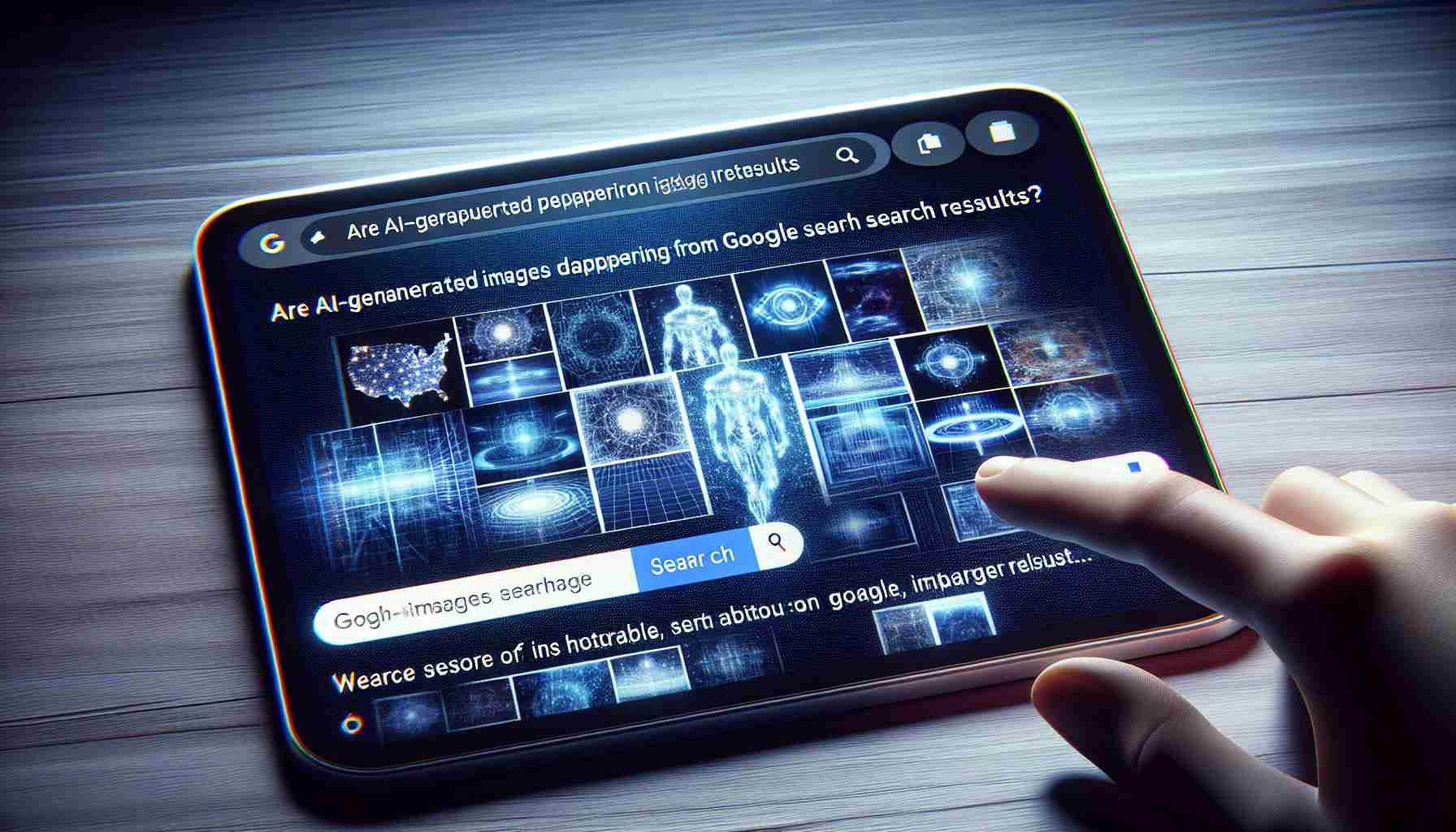- A noticeable decline in AI-generated images’ visibility on Google Image Search is observed, sparking discussions among webmasters and SEO experts.
- Zack Notes identified a drop in image-driven traffic for his project, Animal Matchup, yet other traffic sources remain consistent.
- Similar observations from other creators suggest a possible algorithmic shift in Google’s image search quality metrics.
- Kane Jamison acknowledges updates in Google Images, indicating a potential preference for traditional over AI-generated art.
- Although some believe the change does not significantly affect user experience, it highlights the dynamic relationship between AI and human creativity.
- The situation emphasizes the need for adaptation as the landscape of digital creation evolves rapidly.
A digital storm brews quietly in the corners of the internet, where webmasters and SEO enthusiasts whisper about a curious decline in AI-generated images’ visibility on Google Image Search. The tale unfolds with Zack Notes, an astute observer, dissecting traffic patterns from his video game project, Animal Matchup. He discovered a startling drop in image-driven visitors, while traffic from other sources remained steady as a heartbeat. The evidence laid bare—a stark juxtaposition of drooping image graphs against unwavering web metrics.
Zack isn’t alone in this observation. His inbox fills with murmurs from fellow creators, each echoing the same eerie synchrony—a dip in image traffic time-stamped like a shared sigh. This collective experience fuels suspicions of a new quality metric stealthily slinking through Google’s image algorithms. Could this be an invisible hand nudging AI art from its perch in favor of more traditional creations?
Kane Jamison, another voice in the digital wind, acknowledges multiple updates in the Google Image realm, hinting at a deliberate shift. Though some argue the change bears little impact on user experience, it punctuates the ongoing tension between human creativity and machine-generated art.
As the internet buzzes with speculation, this unfolding narrative serves as a potent reminder: in our race alongside AI, the rules can change with dizzying speed. Whether a boon or bane, adaptation remains the key takeaway. Keep a watchful eye on this evolving story, as today’s advantage may drift like sand through an hourglass, challenging the digital creators to rethink strategy and craft anew.
AI Art Stealthily Sidestepped: What’s Google Really Up To?
Uncovering the Hidden Shift in Google’s Image Search Algorithms
A digital storm is brewing as speculation swirls around a curious decline in the visibility of AI-generated images on Google Image Search. This has surfaced as webmasters and SEO enthusiasts notice an unsettling drop in image-driven site traffic. Observations from Zack Notes and others point to a potential quiet recalibration of Google’s ranking algorithms, possibly pushing AI art aside in preference for traditional images.
This shift has significant implications across several domains:
Potential Impact on Artists and Content Creators
1. Economic Implications:
– Artists and creators who have relied on AI tools to create imagery may find their work less visible, reducing their online reach and potential revenue. As a mitigation strategy, they may need to consider diversifying their creation methods to maintain visibility.
2. Creative Processes:
– A shift toward favoring traditional over AI-generated images could herald a renaissance of manual craftsmanship in digital art, nudging new creative techniques that blend AI with human input.
3. Technological Evolution:
– Developers of AI art tools may see this as a call to enhance AI’s creative capabilities to generate images with even higher originality and quality that meet emerging search engine criteria.
Broader Societal and Global Impacts
1. The Role of AI in Creativity:
– This serves as a reflection on the ever-present tension between human and machine creativity. As technologies evolve, they continually redefine how we understand and value artistry.
2. Cultural Ramifications:
– An emphasis on traditional images could help preserve cultural artworks and techniques, but it may also slow the integration of AI art into global museums or galleries.
Important Questions and Considerations
1. Why would Google make changes that appear to marginalize AI-generated images?
– Google could be responding to user feedback favoring traditional images deemed more authentic, or they might be enhancing the perceived quality of search results.
2. How will this affect the development of AI technologies?
– Companies may prioritize creating AI systems that are not only capable of generating art but also ensuring it meets higher standards for originality and creativity that align with search engine preferences.
3. Will users see a significant difference in the quality and variety of images available?
– If traditional images become prioritized, users may encounter a broader spectrum of artistic styles, possibly leading to richer experiences when exploring visual searches online.
Adapting to Changes
Adapting to this potential shift involves honing strategies for digital creators. Reassessing content strategies and embracing more nuanced approaches to image creation could be imperative for sustained visibility. Creators may also benefit from a mix of traditional and AI techniques to balance the creative spectrum.
Suggested Related Links
Before making predictions about the trajectory of AI art and its standing in Google Image Search, monitoring Google’s own communications would be wise. You can check their updates and resources on the main website: Google.
This situation serves as a potent reminder that in our race alongside AI, the rules are ever-evolving. The landscape of digital art and search ranking remains fluid, demanding vigilance, adaptability, and innovation from creatives around the globe.
